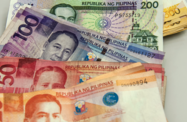The Philippines’ central bank is confident the country’s financial system can withstand any strains imposed by an economic slowdown in Western markets, though it is keeping an eye on the domestic banking industry for any signs that it may be catching the chill afflicting the US and Europe.
The Bangko Sentral ng Pilipinas (BSP) announced in late August its Supervision and Examination Sector (SES) would be conducting stress tests of the country’s banks twice a year aimed at assessing any risks the institutions may be exposed to, any weaknesses in their systems and their ability to withstand pre-identified shocks. The first cycle of testing is to take place each June, using data current as of March, with the second round to be conducted in December, with September data serving as the base line.
The testing aims to determine how well local banks can handle certain levels of stress, and to assess the system’s weaknesses and its capability to deal with risks related to interest rates, foreign exchange and liquidity. The assessment will also establish the amount of capital local banks would require should the global economy continue to slow. In its first stages, the testing regime will cover universal and commercial banks, as well as the country’s larger thrift banks; later implementations will extend to also include smaller rural banks.
The BSP has made clear that such stress tests are intended as a means of monitoring banking performance and are not a move prompted by concerns over the sector’s health. In early August the BSP’s governor, Amando M Tetangco Jr, said local banks were well capitalised and had little to fear from external events, including the credit rating downgrade of the US by ratings agency Standard & Poor’s. Recent assessments showed domestic lenders’ capital adequacy ratio (CAR) was well above both the BSP’s minimum rates and those set by the Basel Accord, he said.
“Now we have conducted certain assessment or stress tests on how this is going to affect Philippine banks and the results show that the banks here are fairly resilient and will not be adversely affected by an increase in spreads for instance. There, of course, will be some effects but it is unlikely that [these are] going to be very significant,” Tetangco told reporters on August 3.
Tetangco’s optimism found support in a recent research note issued by the Bank of America Merrill Lynch, which said the Philippines’ economy would be able to ride out the effects of a weakening US recovery. However, the release noted that the BSP may have to increase base interest rates to cool consumer demand and take some heat out of inflation.
“Our previous work has shown that the Philippines is surprisingly resilient to slowdowns in US growth,” the August 26 report said. “Also, inflation is relatively high: we expect it to peak close to 6% year-on-year (y-o-y) in September or October. Thus, our call on interest rates is relatively hawkish in the regional context.”
That hawkish call included a prediction that the BSP would raise interest rates twice before the end of the year, adding 50 basis points to the current key overnight borrowing rate of 4.5%.
However, the country’s financial situation now seems to be changing, with data released by the National Statistical Coordination Board on August 31 indicating a slowing of the pace of both economic growth and inflation. GDP increased by 3.4% y-o-y in the second quarter, compared to a 4.6% rise in the first three months of the year. Inflation also slowed somewhat, with the July rate of 4.6% down from 5.2% the previous month, in line with the BSP’s forecast of between 3.9% and 4.8% for the year.
Another indication of the sector’s good health came in late August, with a report showing all but one of the top 10 domestic banks posting increases in first-half profits over the same term in 2010. Further positive news came with the BSP’s August 29 announcement that the industry had recorded a 7.1% rise in assets for the January-May period.
Until the full effects of the slowdown in the US and Europe become clear, it will be difficult to predict how they will impact the Philippines and its banking sector. However, the BSP has said it is monitoring the flow of hot money, with Tetangco stating it was essential to watch any shift in sentiment and react as necessary to ensure the country’s policy stance remains appropriate and consistent with established price and growth objectives. These goals include having the sector continue to make loans available to businesses and consumers, while avoiding lending at a rate that could put the industry at risk or fuel overheating, issues the BSP aims to keep well in check.

